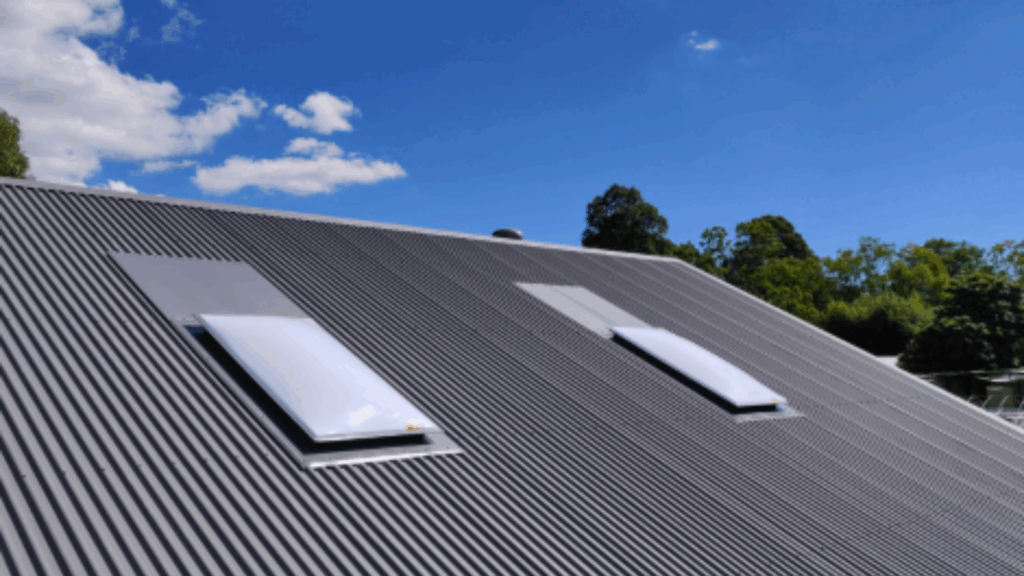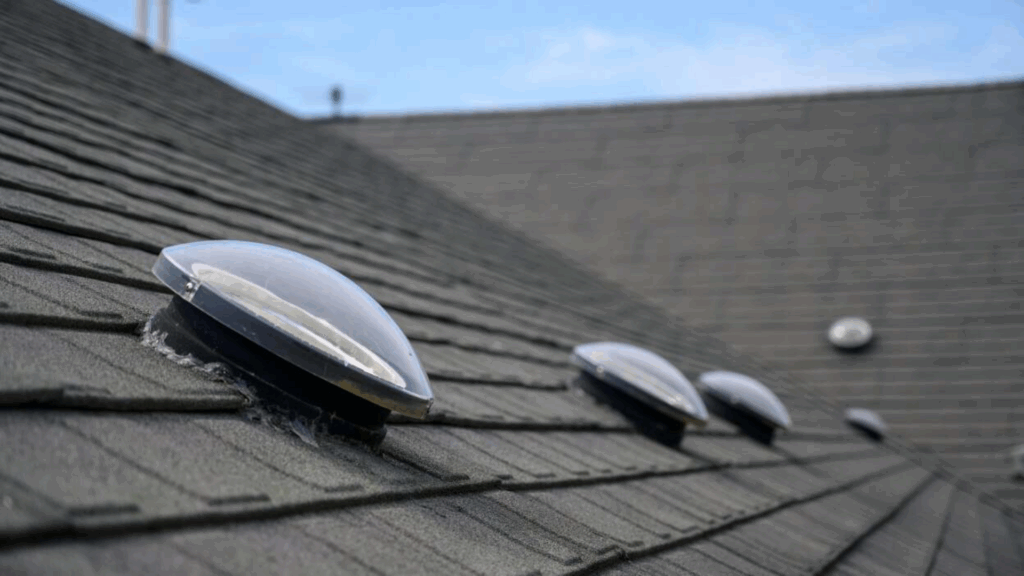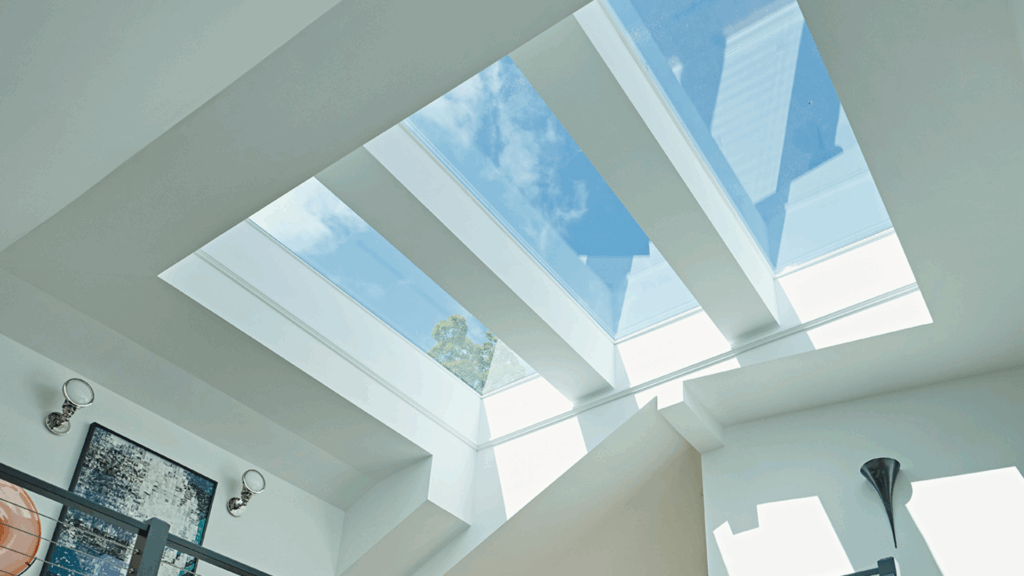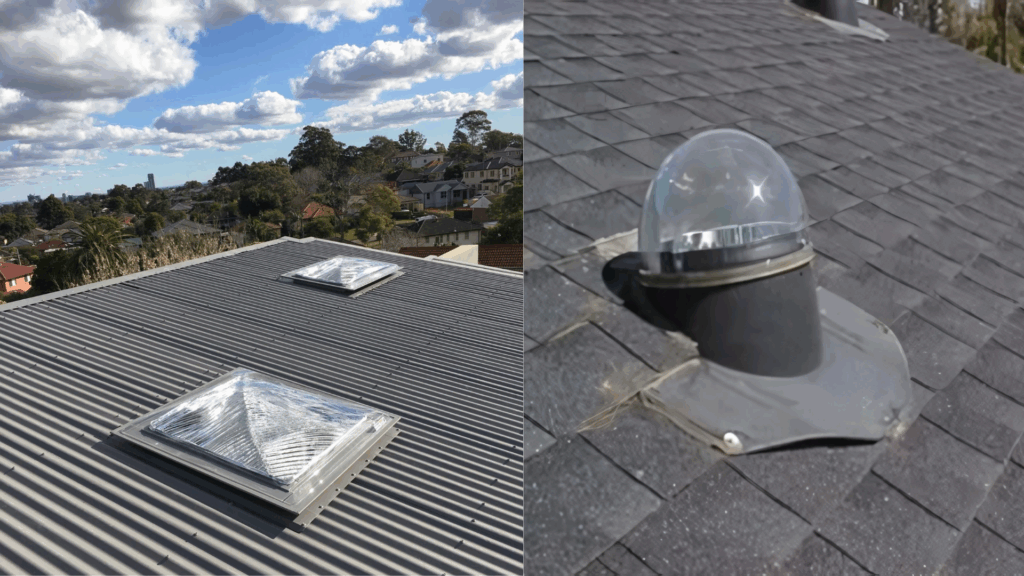If you’re thinking about adding a skylight to your home, you’re probably looking to brighten up a room with natural light or improve ventilation.
I completely understand the excitement of choosing the right skylight. When I first installed one in my living room, I was amazed at how much brighter and more welcoming the space became.
However, the process wasn’t as simple as just selecting a skylight. I had to consider cost, installation, energy efficiency, and how much light I really needed.
Over the years, I’ve had both traditional and tubular skylights installed in different parts of my home, and I’ve learned a lot along the way.
In this post, I’ll guide you through the differences between traditional and tubular skylights, sharing my experiences to help you determine which one suits your space and budget.
What Are Skylights?
Let’s start with the basics. Skylights are windows installed in your roof to let in natural light.
They’re perfect for spaces that don’t have access to exterior walls for traditional windows or when you want to improve a room with a bit more sunlight.
Whether it’s your kitchen, bathroom, hallway, or even a closet, skylights can brighten up any space.
There are two main types: traditional skylights and tubular skylights. I’ve had both types installed at different times in my home, and I can say each has its distinct benefits.
Let’s examine the differences, starting with traditional skylights.
Understanding Traditional Skylights

Traditional skylights are the more common option. These skylights are generally larger and made of glass or acrylic. They can be fixed or operable, meaning they can either remain closed or open for ventilation.
Pros of Traditional Skylights
- Natural Light & Ventilation: Traditional skylights are excellent at bringing in lots of natural light. If you install an operable skylight, you also get the added benefit of ventilation, which is great for reducing humidity and improving indoor air quality.
- Appearance: There’s no doubt that a traditional skylight can add a refined touch to any room. The wide, open view of the sky and the light it allows can make a space feel larger and more inviting.
- Energy Efficiency: With the right choice of glazing, traditional skylights can be energy efficient, helping to regulate the temperature in your home by letting in natural warmth from the sun in winter while keeping the heat out in summer.
Cons of Traditional Skylights
- Cost: If you’re on a tight budget, traditional skylights might not be the best option. Installation can be expensive, especially if your roof requires modifications to fit the skylight.
- Potential for Leaks: One of the biggest concerns with traditional skylights is the potential for leaks, especially if they’re not installed correctly or if the seals degrade over time. While many skylights come with waterproofing features, the risk is still present.
- Heat Gain/Loss: While skylights can help with heating in winter, they can also cause problems in the summer months if the proper glass isn’t chosen. Too much sunlight can lead to overheating in your home, requiring additional air conditioning to maintain a comfortable temperature.
Understanding Tubular Skylights

Now, if you’re looking for something a bit more compact or budget-friendly, tubular skylights might be your best option.
Also called sun tunnels, these skylights are smaller and consist of a reflective tube that channels light from the roof into your room.
Pros of Tubular Skylights
- Compact & Space-Saving: Tubular skylights don’t take up much room, so they’re perfect for smaller spaces where a traditional skylight would feel out of place.
- Cost-Effective: Tubular skylights are generally more affordable to install than traditional ones. They require less labor because the installation process is simpler and less intrusive.
- Easy Installation: Since the tube is small, installation is quicker, which can save you money on labor costs. In fact, if you’re handy, you might even be able to install one yourself.
- Great for Smaller Spaces: If you’re looking to brighten a smaller room like a bathroom, closet, or hallway, tubular skylights are ideal. They offer just the right amount of light without overwhelming the space.
Cons of Tubular Skylights
- Limited Light Coverage: While tubular skylights are excellent for small spaces, they don’t provide the same light coverage as traditional skylights. If you’re hoping to brighten a large living room or kitchen, a traditional skylight might be a better option.
- No Ventilation: Unlike traditional skylights, tubular skylights don’t provide the added benefit of ventilation. So, if airflow is important to you, this could be a downside.
- Design Limitations: Some people might not like the more modern, understated look of tubular skylights. They don’t offer the dramatic visual effect of larger skylights, which could be a dealbreaker if you’re looking for a standout feature.
Cost Comparison: Traditional vs. Tubular Skylights
Traditional skylights typically cost between $500 – $3,000, while tubular skylights are more affordable, ranging from $300 to $1,500.
| Feature | Traditional Skylights | Tubular Skylights |
|---|---|---|
| Initial Installation Costs | $500 to $3,000 | $300 to $1,500 |
| Maintenance Costs | Regular inspection for leaks and cleaning glass | Less maintenance, but reflective tube can collect dust |
| Energy Efficiency | Good for passive heating in winter, but may cause heat gain in summer without insulation | More energy-efficient, but doesn’t provide the same solar heat benefits in winter |
| Ideal Use | Larger spaces requiring more light and ventilation | Smaller spaces requiring less installation and maintenance |
Traditional skylights have higher installation costs, but they provide more light and ventilation. Tubular skylights are simpler to install, ideal for smaller spaces, and require less maintenance.
Which Skylight Is Right for You?

Choosing between a traditional and tubular skylight depends on your needs and budget. Here’s what I’d suggest based on my experience:
- If you want more light and ventilation in a larger room, a traditional skylight will probably be your best choice.
- If you’re on a budget or need something for a smaller space, tubular skylights are a fantastic option. They’re easy to install, cost-effective, and perfect for smaller rooms like bathrooms and hallways.
Conclusion
After having both traditional and tubular skylights installed in my own home, I can say that each type has its perks.
Traditional skylights are great for large rooms and bring in lots of light and fresh air, though they can be costly and require more maintenance.
On the other hand, tubular skylights are more affordable and work wonders in small spaces, providing just enough light without the need for extra room.
Whatever you choose, just make sure to consider your space, budget, and long-term needs.
Skylights are an investment that will brighten up your home for years, and I’m sure you’ll be happy with whichever type you go for.

